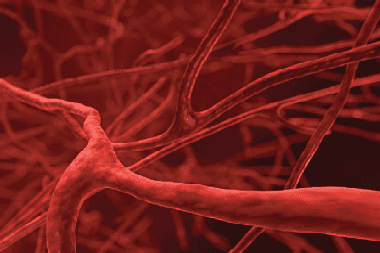Cardiovascular system >>>> Cryoglobulinemia - what is it?
Cryoglobulinemia - what is it?

Cryoglobulinemia refers to painful pathological conditions of the body caused by precipitation (gelling) of immunoglobulins (IgG, IgM, IgA) when the blood temperature drops below 37 degrees. Such immunoglobulins are called cryoglobulins, and the precipitation process itself is called cryoglobulinemia.
Cryoglobulins, present in the bloodstream, in addition to various other protective functions, play the role of immune agents that bind and remove pathogens from the body. Therefore, the presence of cryoglobulins in the blood is due to their immune purpose, but with hypothermia, freezing, dehydration and many other conditions traumatic for the body as a whole, cryoglobulins gel and are deposited on the walls of blood vessels, creating obstacles to blood flow and provoking inflammatory processes in the vascular wall.
Most infections of a bacterial, viral, fungal, parasitic nature contribute to the production of cryoglobulins, but cryoglobulinemia does not develop in all cases, but only if there are immunopathological prerequisites for its development. These prerequisites include autoimmune diseases, rheumatic diseases, systemic tissue diseases, infectious diseases (herpes, hepatitis, HIV, cytomegaly, mononucleosis, syphilis, endocarditis, and some others).
Cryoglobulinemia signs often resemble those of skin, vascular, rheumatic diseases and appear as:
- hemorrhagic petechial rash (uniform red spots caused by subcutaneous capillary bleeding),
- diathesis,
- cold dermatitis ,
- arthralgia (temporary joint pain),
- muscle weakness,
- Raynaud's syndrome.
Cryoglobulinemia is dangerous with thrombosis, which can develop in the blood vessels supplying the kidneys, liver, lungs, tissues of the extremities, which in turn causes such severe conditions as systemic vasculitis, glomerulonephritis, renal failure, liver failure, hepatomegaly, pulmonary hemorrhage, gangrene, lymphadena sensory polyneuropathies and many other serious disorders.
Treatment of cryoglobulinemia includes cytostatics, anti-inflammatory steroids, antiviral therapy (if there are indications for its use). In some cases, immunosuppressants are used. The main treatment depends on the diseases that maintain the state of cryoglobulinemia in the body. Plasmapheresis is used to remove precipitated cryoglobulins.

Read

Read



























